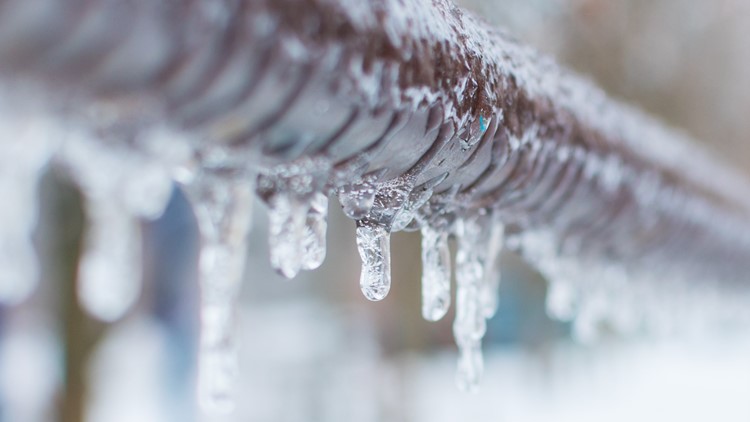Are you currently in search of tips involving How to prepare your home plumbing for winter weather?

Cold weather can wreak havoc on your plumbing, especially by freezing pipes. Right here's exactly how to avoid it from taking place and what to do if it does.
Intro
As temperature levels decrease, the danger of frozen pipes boosts, possibly leading to expensive fixings and water damages. Understanding how to avoid icy pipelines is critical for homeowners in cold climates.
Avoidance Tips
Shielding prone pipes
Wrap pipes in insulation sleeves or use heat tape to secure them from freezing temperature levels. Concentrate on pipelines in unheated or outside areas of the home.
Home heating techniques
Maintain indoor areas properly warmed, especially areas with pipes. Open cabinet doors to enable cozy air to circulate around pipes under sinks.
Exactly how to recognize icy pipes
Search for reduced water circulation from taps, uncommon smells or sounds from pipelines, and noticeable frost on revealed pipelines.
Long-Term Solutions
Architectural changes
Consider rerouting pipelines far from outside wall surfaces or unheated areas. Add extra insulation to attics, cellars, and crawl spaces.
Updating insulation
Buy high-quality insulation for pipelines, attic rooms, and walls. Proper insulation aids preserve consistent temperature levels and reduces the risk of frozen pipelines.
Shielding Outdoor Plumbing
Yard hose pipes and outside taps
Detach and drain yard tubes prior to winter months. Install frost-proof spigots or cover exterior faucets with protected caps.
Comprehending Icy Pipes
What causes pipelines to ice up?
Pipelines freeze when revealed to temperatures listed below 32 ° F (0 ° C) for extended durations. As water inside the pipes ices up, it expands, putting pressure on the pipe wall surfaces and possibly creating them to break.
Threats and damages
Frozen pipelines can lead to supply of water interruptions, property damage, and pricey repairs. Ruptured pipelines can flood homes and trigger comprehensive structural damages.
Indicators of Frozen Water Lines
Determining frozen pipelines early can avoid them from bursting.
What to Do If Your Pipelines Freeze
Immediate actions to take
If you suspect icy pipes, maintain faucets open up to eliminate pressure as the ice thaws. Use a hairdryer or towels soaked in hot water to thaw pipes gradually.
Verdict
Protecting against icy pipes needs aggressive procedures and quick reactions. By understanding the causes, signs, and preventive measures, house owners can shield their pipes throughout cold weather.
5 Ways to Prevent Frozen Pipes
Drain Outdoor Faucets and Disconnect Hoses
First, close the shut-off valve that controls the flow of water in the pipe to your outdoor faucet. Then, head outside to disconnect and drain your hose and open the outdoor faucet to allow the water to completely drain out of the line. Turn off the faucet when done. Finally, head back to the shut-off valve and drain the remaining water inside the pipe into a bucket or container. Additionally, if you have a home irrigation system, you should consider hiring an expert to clear the system of water each year.
Insulate Pipes
One of the best and most cost-effective methods for preventing frozen water pipes is to wrap your pipes with insulation. This is especially important for areas in your home that aren’t exposed to heat, such as an attic. We suggest using foam sleeves, which can typically be found at your local hardware store.
Keep Heat Running at 65
Your pipes are located inside your walls, and the temperature there is much colder than the rest of the house. To prevent your pipes from freezing, The Insurance Information Institute suggests that you keep your home heated to at least 65 degrees, even when traveling. You may want to invest in smart devices that can keep an eye on the temperature in your home while you’re away.
Leave Water Dripping
Moving water — even a small trickle — can prevent ice from forming inside your pipes. When freezing temps are imminent, start a drip of water from all faucets that serve exposed pipes. Leaving a few faucets running will also help relieve pressure inside the pipes and help prevent a rupture if the water inside freezes.
Open Cupboard Doors
Warm your kitchen and bathroom pipes by opening cupboards and vanities. You should also leave your interior doors ajar to help warm air circulate evenly throughout your home.

As an enthusiastic reader on Prevent Frozen Pipes , I figured sharing that piece of content was valuable. Loved our blog? Please quickly share it. Let another person discover it. Thanks so much for taking the time to read it.
Free Estimate